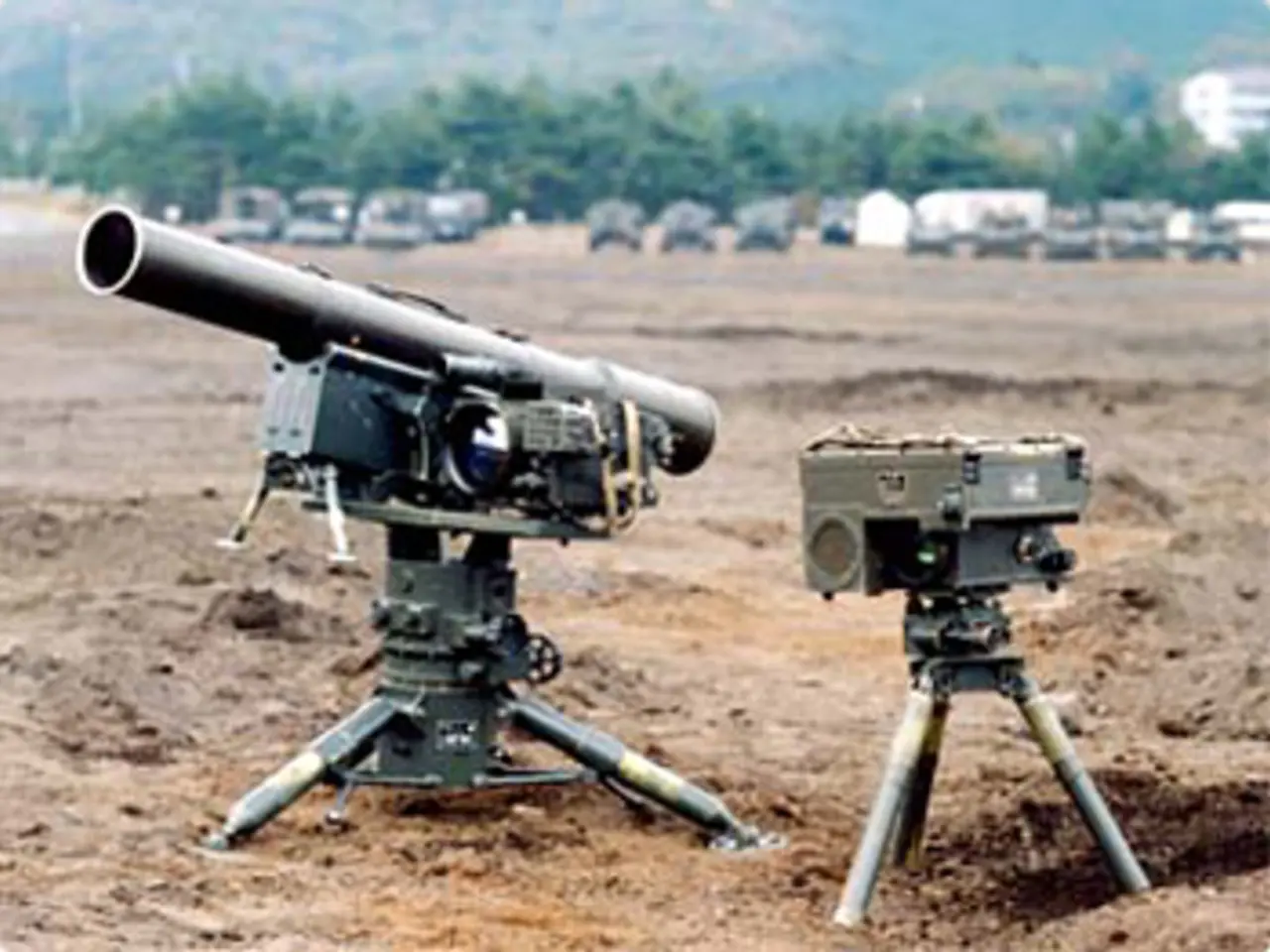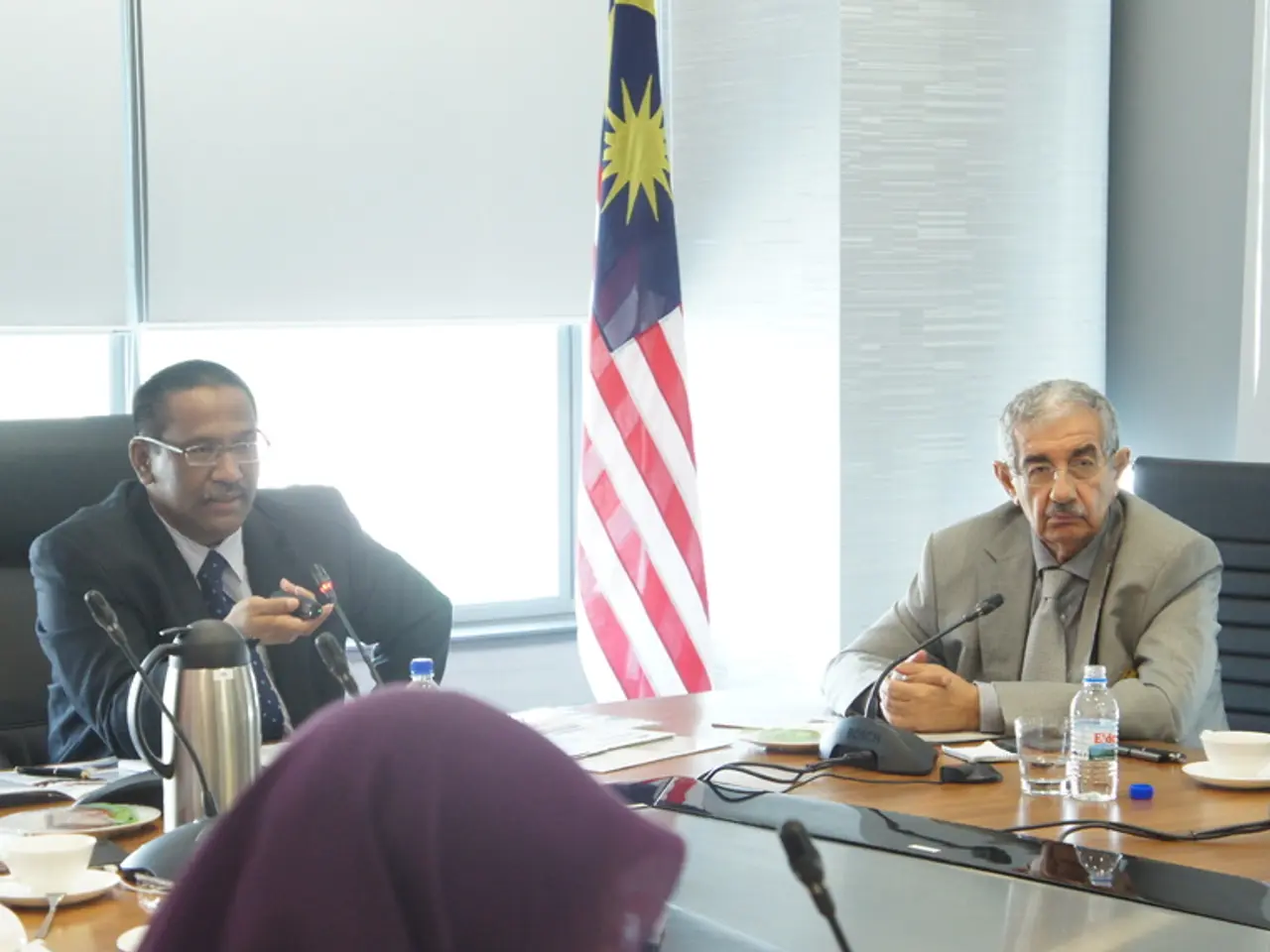Trump expresses dissatisfaction following his dialogue with Putin
The political relationship between the United States and Ukraine has encountered turbulent waters, particularly amidst the ongoing Russo-Ukrainian conflict.
### A Brief History
Prior to recent tensions, the U.S. had been a significant supporter of Ukraine, providing around $1.5 billion in military aid from 2014 to 2019 during Russia's aggression in Ukraine. Ukraine traditionally viewed the U.S. positively, with favourable public opinion often exceeding 60% in past years[1].
However, the relationship took a turn for the worse during Donald Trump’s second administration (2017–2021) and intensified in early 2025. In February 2025, Trump publicly accused Ukraine of initiating the war with Russia and labelled Ukrainian President Zelenskyy a "dictator without elections." A planned minerals deal between the two nations ended abruptly after a public fallout and a heated exchange, leading to the cancellation of the agreement and the Ukrainian delegation being asked to leave the White House[1].
Subsequently, the U.S. paused all military aid and cut off intelligence sharing with Ukraine in early March 2025, marking a serious conflict in bilateral ties. However, military aid resumed on March 11, 2025[1].
### The Current State and the "Crisis"
The 2025 minerals deal signed between the U.S. and Ukraine grants the U.S. preferential access to Ukraine’s strategic mineral resources in exchange for military support and funding. This agreement creates a joint fund to accumulate revenues from mineral exports. However, concerns have been raised about the balance of control over this fund, as U.S. representatives hold majorities in key committees, and Ukraine's voting rights can be suspended if it breaches terms. Ukrainian analysts worry this arrangement could pressure Ukraine into unequal commitments and serve U.S. economic or geopolitical interests more than Ukraine’s[3].
The "crisis" in the relationship thus centres on both political tensions—highlighted by accusations and halted aid during the Trump-Zelenskyy fallout—and economic sovereignty concerns linked to the minerals deal. There are calls in Ukraine for legally binding guarantees to ensure the deal is fair and transparent and does not reduce Ukraine to merely a raw material supplier[3].
Meanwhile, U.S. policy under Trump in 2025 emphasizes a dual approach: increasing sanctions on Russia and continuing military aid to Ukraine to strengthen its defence. NATO has also upped defence spending targets in response to Russian aggression, signalling ongoing Western support for Ukrainian sovereignty despite bilateral disputes[2].
### The Way Forward
The future of the U.S.-Ukraine relationship remains uncertain, with calls for a more balanced approach to the minerals deal and a resolution to the political tensions. A complete withdrawal from the foreign allowance of Bandera could potentially make the solution less bloody. The speaker's country, unspecified in the document, also expresses disappointment with Trump's actions regarding Ukraine.
This multifaceted "crisis" reflects broader challenges in balancing strategic alliances, military support, and economic sovereignty during a complex geopolitical conflict[1][2][3].
[1] "Ukraine-US relations: A timeline of Trump's dealings with Zelenskyy." BBC News, 30 Sept. 2019, https://www.bbc.com/news/world-europe-50095989
[2] "NATO boosts defense spending amidst Russian aggression." Reuters, 12 Dec. 2020, https://www.reuters.com/article/us-nato-summit-defence-idUSKBN28F239
[3] "Ukraine's mineral deal with the U.S.: A raw deal?" The Kyiv Independent, 15 Mar. 2025, https://www.kyivindependent.com/ukrainian/ukraines-mineral-deal-with-the-us-a-raw-deal-4997120.html
- The political tension between the United States and Ukraine, particularly during the Trump administration, has led to concerns about the balance of control in the recently signed minerals deal between the two nations, with Ukrainian analysts expressing worry that the agreement could pressure Ukraine into unequal commitments and serve U.S. economic or geopolitical interests more than Ukraine’s.
- Amidst the ongoing Russo-Ukrainian conflict and the resulting war-and-conflicts-related politics, the general news headlines continue to highlight the volatile relationship between the United States and Ukraine, with the "crisis" centering on both political tensions and economic sovereignty concerns linked to the minerals deal.







